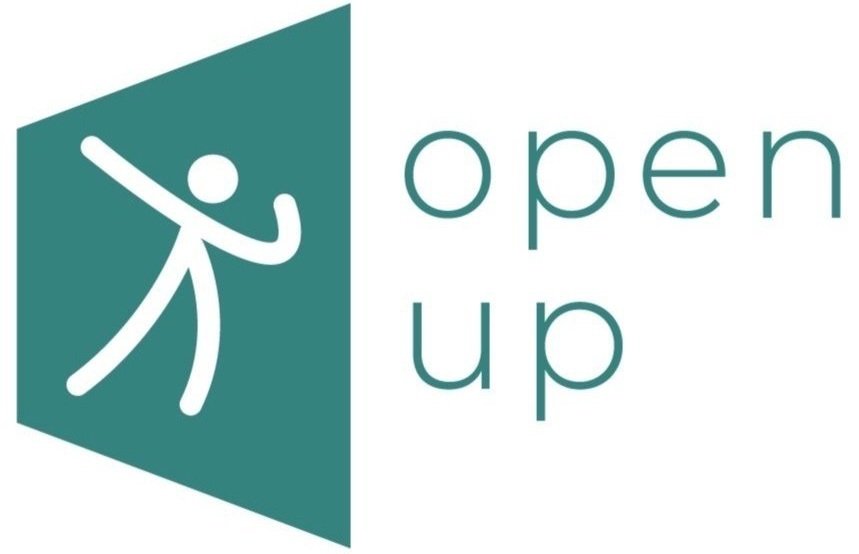The Transformative Power Of Breathing: How A Childhood Lesson Shaped My Outlook On Wellness In Workspaces
Article originally published on Forbes.com in July 2024
The pressure to perform is a constant in today's fast-paced world. From the classroom to the corporate office, we're often evaluated on our productivity and efficiency. But what if the key to unlocking our full potential lies not in sheer willpower, but in a simple, often overlooked practice: breathing?
As the co-founder of Open Up, an organization dedicated to making yoga, mindfulness, and movement accessible to our community, I've witnessed firsthand the transformative power of these practices. Little did I know that the seeds of this passion were sown during my own formative years. A simple lesson about breathing, learned in a fourth-grade gym class, would eventually shape my life's work.
In fourth grade, I was not particularly athletic. Physical education was a subject I approached with a mix of apprehension and anxiety. The annual Presidential Physical Fitness Tests were a source of dread, and the body fat measurements performed with pinching tools were uncomfortable. Growing up as a chubby child in a single-parent household, where exercise wasn't a priority, I often felt out of place in gym class.
One vivid memory stands out: the pull-up test. Timed to see how long we could hang from a pull-up bar, I lasted a mere second. Sitting on the sticky, glossy gymnasium floor, I nervously eyed the towering rope. As I prepared to climb, the gym teacher casually remarked, “You know, you can breathe through your nose and that will help you feel more calm. When you breathe specifically through your nose and not your mouth, the air can cool down the part of the brain that makes you nervous. If you are more calm, you will be able to do everything better.”
Fourteen years later, as a graduate student studying literacy education, I revisited that seemingly casual comment. Our class delved into the latest research on the "learning brain," exploring how the amygdala, the brain's emotional center, impacts our ability to learn. We discovered that even subtle feelings of stress can hinder cognitive function. Intriguingly, the research highlighted the power of breathing techniques in calming the mind and enhancing focus. Our professor emphasized the importance of teaching these skills to students from a young age, positioning them as essential as reading and writing.
Armed with this newfound knowledge about the brain and breathing, I reflected on my own experience. That fourth-grade gym class, once a source of anxiety, now held a new significance. Equipped with the simple technique of nasal breathing, I returned to the pull-up bar later that same year. Approaching the rope, I took a deep breath and... well, I was only able to stand on the knot at the bottom for a moment or two. But the following year, I achieved second place among the girls in the pull-up bar hang, lasting over a minute and 20 seconds.
I believe this remarkable turnaround was largely due to the adult who took the time to teach me a simple yet powerful breathing strategy. By signaling that emotional well-being was linked to performance, he challenged the common assumption that success is solely dependent on willpower or innate talent. This recognition empowered me to prioritize my emotional health, demonstrating that we are not at the mercy of our emotions but can actively manage them to enhance our abilities. This experience highlighted the body's capacity to overcome obstacles through mindful techniques. Today, I work at an organization that emphasizes the mind-body connection. It's a powerful tool that I'm grateful to have discovered so early in life.
Our schools, media, and workplaces often overlook the socio-emotional barriers to success and do not normalize that success is more universally achievable when we acknowledge the human need to prioritize well-being. While many companies offer mental health resources or gym memberships, they frequently overlook the importance of daily self-care. This disconnect between our physical and mental health can lead to burnout.
Imagine a workplace that truly values both physical and mental well-being. By prioritizing employee health, companies can enhance productivity and job satisfaction. My journey from struggling student to wellness advocate highlights the transformative power of simple, mindful practices. This is a lesson we should all embrace at every stage of life.
Suggestions for Normalizing Wellness of Mind/Body in Workplaces
Normalize Mindful Moments: Incorporate brief mindfulness practices (e.g., one-minute breathing, two-minute reflection, three-minute body scan) into daily meetings to cultivate self-awareness and stress management.
Foster Connection and Inspiration: Dedicate a short, structured segment in each meeting for employees to share inspirational stories, personal challenges, or gratitude. This promotes a positive and supportive work environment.
Prioritize Open Communication: Encourage employees to share their energy levels and workload during team meetings. This fosters transparency, builds empathy, and facilitates mutual support.
Optimize Work-Life Balance: Explore options like reduced workweeks (30-hour or four-day) to improve employee well-being and job satisfaction.
Invest in Physical Health: Offer on-site movement classes or subsidized gym memberships to support employees' physical health and reduce stress.
Cultivate Strong Relationships: Allocate paid dedicated time for team-building activities and social interactions to foster trust, connection, and a sense of belonging. It's essential to recognize that these activities are crucial for employee morale and productivity, and should not be treated as optional or unpaid overtime. By investing in these opportunities, companies demonstrate a commitment to employee well-being and a positive workplace culture.
Lead by Example: Demonstrate commitment to wellness by actively participating in these initiatives and encouraging leadership involvement.
By embracing these enhanced suggestions, you can create a more holistic and supportive workplace culture that prioritizes the well-being of employees and recognizes the interconnectedness of mind and body.



